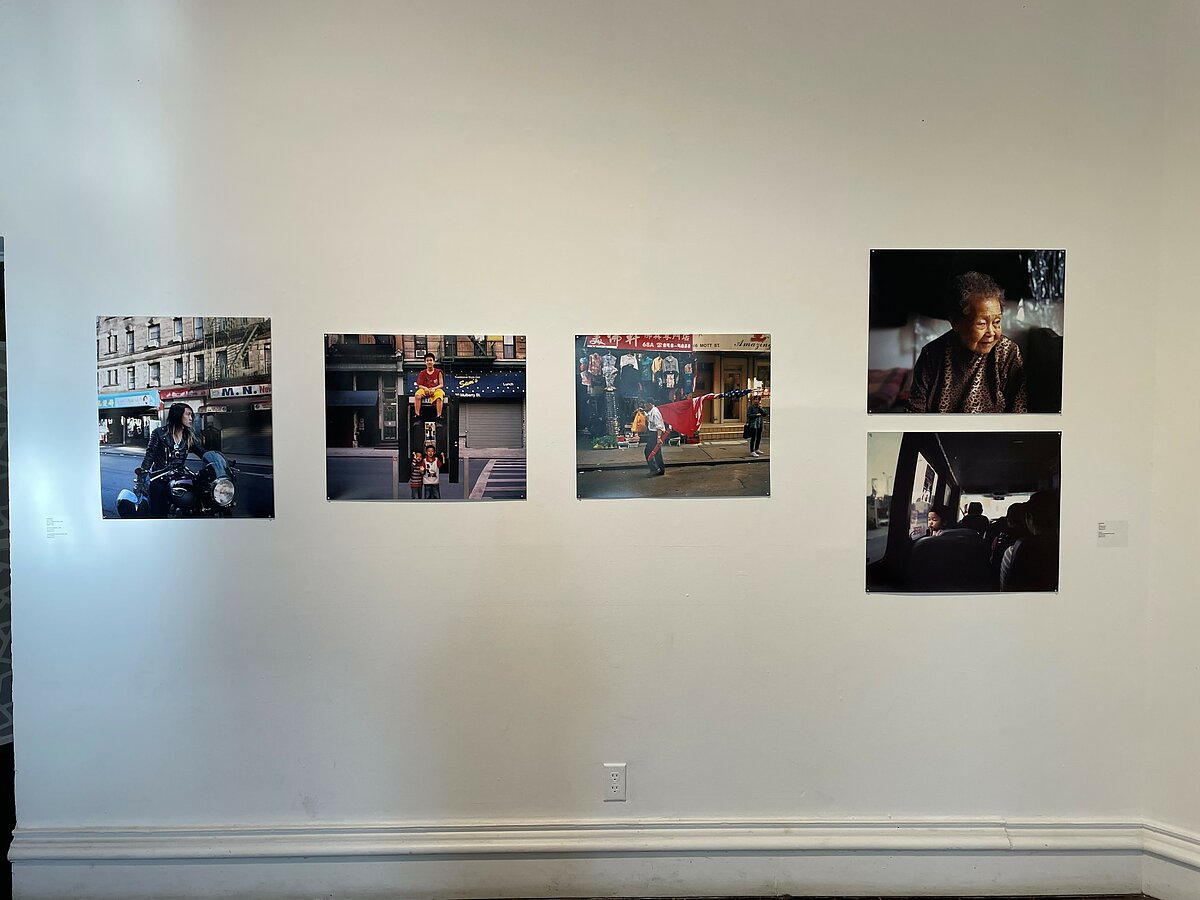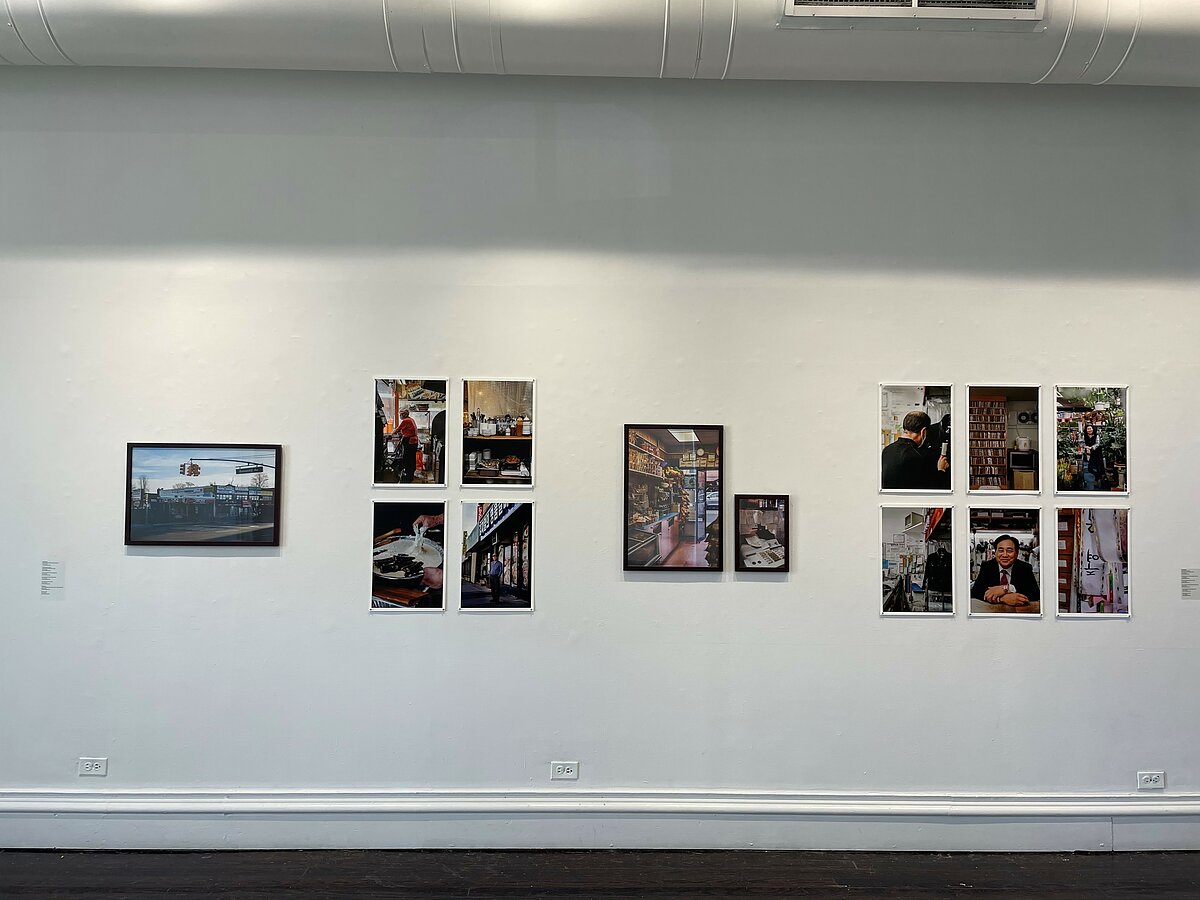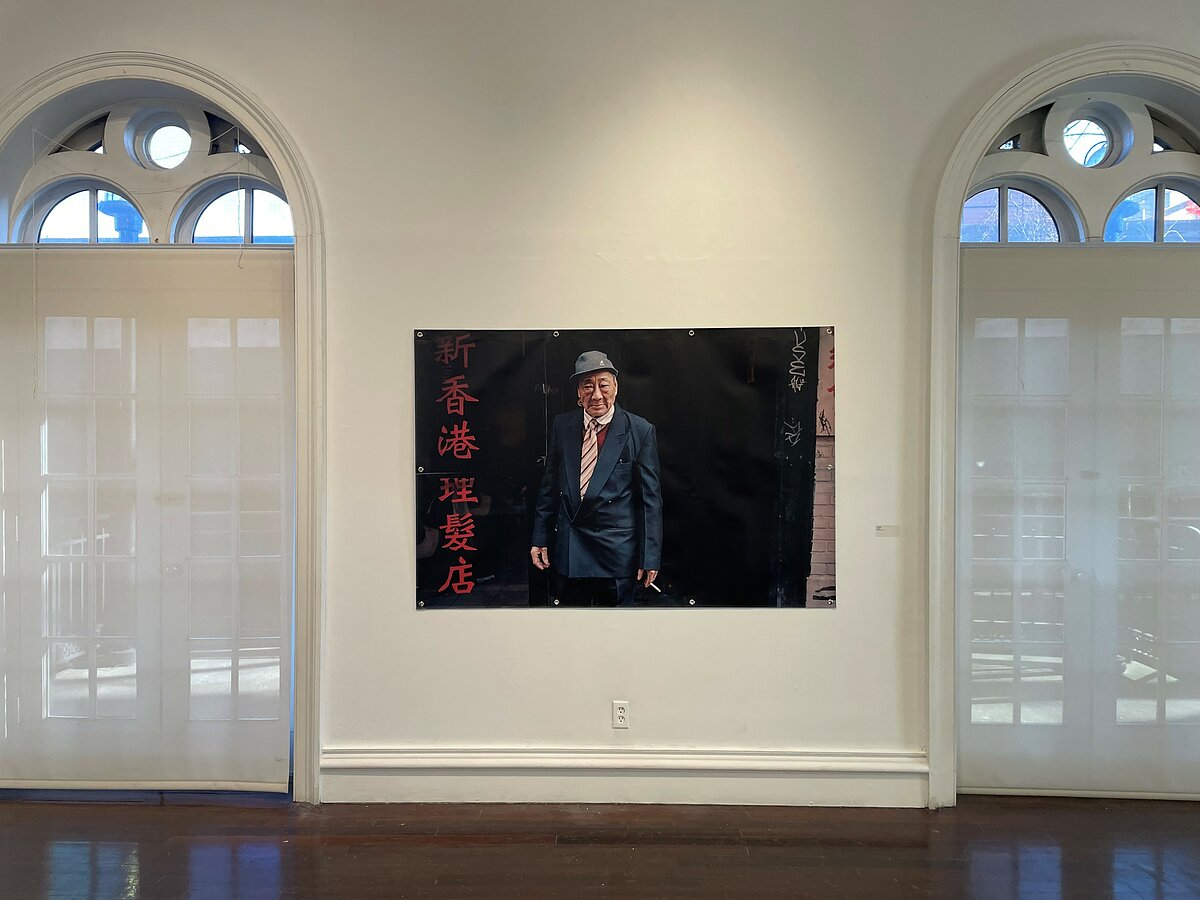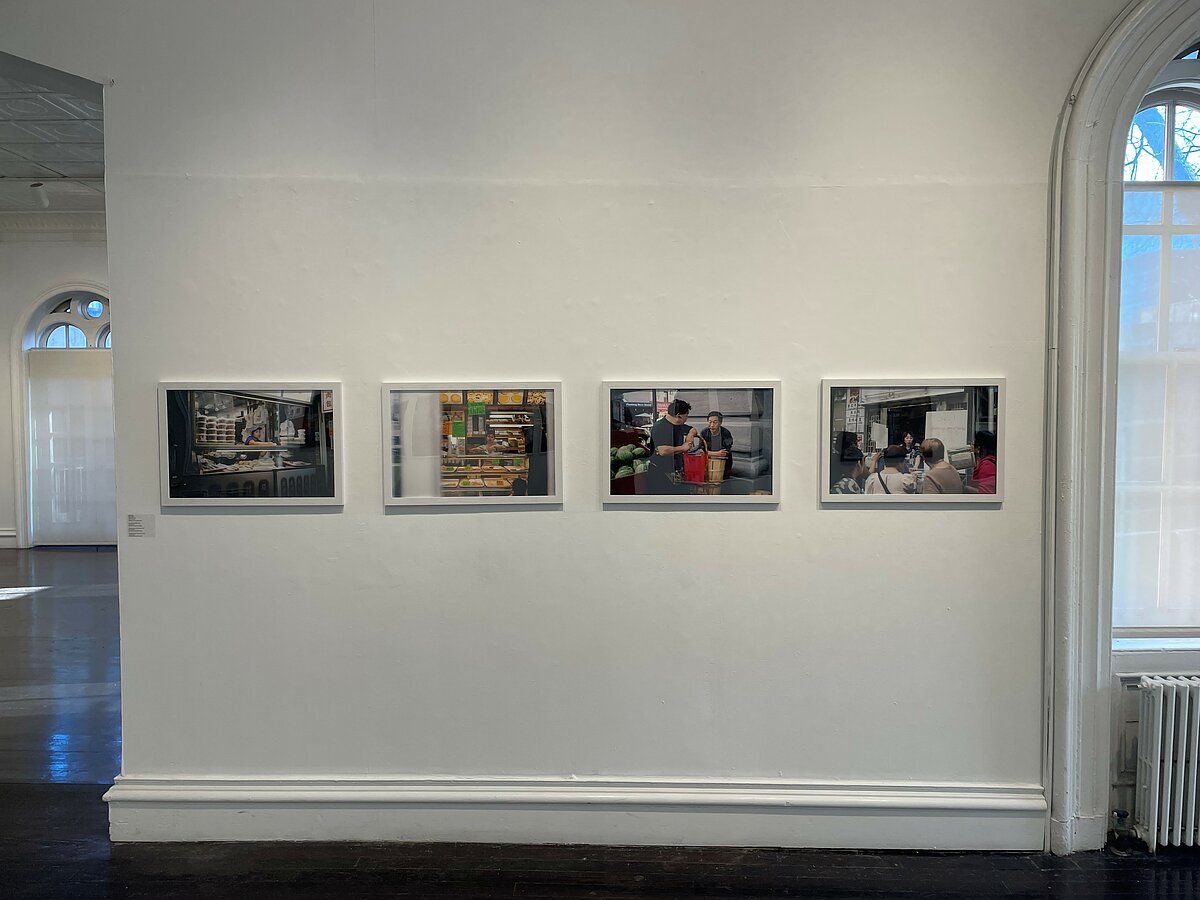“This is Home” Captures the Everyday Beauty of Community
What makes a group of people a community? When does a place become a home? Reigning in the year of the water rabbit, the current exhibition at Flushing Town Hall features the work of three photographers capturing NYC’s AAPI enclaves. Titled “This is Home,” the show explores the indelible sense of belonging, pride, and self-assuredness present in these neighborhoods.
For photographer Janice Karam Chung, community is right outside the front door of the exhibition. Her ongoing series, “Han in Town,” documents Flushing’s Koreatown through evocative still lifes and captivating portraits of local business owners.
Displayed in groups, Chung’s photographs are an assemblage of vignettes from the neighborhood; a still life of a dry cleaner’s workspace featuring a wall checkerboarded with documents, receipts, and other official papers and reminders; a local plant seller surrounded by her greenery; a dapper tailor wearing a handsome suit and watch smiling directly into the camera, his arms folded purposefully on the counter.
While Chung’s series title refers to the notion of “han,”—loosely defined as a kind of generational sorrow and regarded as the existential core of being Korean—what Chung’s images reveal is an identity that extends beyond this inherited sense of pain and suffering. Chung’s images rejoice in the quotidian joy of seeing your neighbors.
Similarly, photographs from An Rong Xu’s series, “My Americans,” also locate identity in the everyday. Xu’s portraits capture the residents of Manhattan’s Chinatown community, observing the nuanced ways people hold on to who they are and wear their heritage with pride. Printed large on vinyl banners, these portraits declare a community deeply immersed in itself.
In one particularly striking image, five teenage girls are sitting on and around a park bench on a sunny afternoon. Either on their phones, speaking to one another, or looking elsewhere, none of them are facing the camera. They don’t seek our attention or acknowledgment; they exist on their own terms, oblivious to our gaze.
Meanwhile, the subjects in Cindy Trinh’s photographs documenting recent protests against racial violence around the city demand that we look. On one wall of the exhibition features a series of portraits of protestors holding up signs that declare “I’m not a virus, I’m not a desire, I’m not afraid,” “This is our home too,” “Asians support Black Lives Matter,” and “The only way to survive is by taking care of one another.” Each of Trinh’s subjects look solemnly into the lens, imploring us to see.
Together, Trinh, Xu, and Chung show us all the ways belonging and rootedness are made tangible. Their photographs capture the little, ordinary moments within a community that come to define home.







